#154 The National Diet Building
A social studies field trip site that could transform into a popular attraction from the perspective of architecture symbolizing Japan's modernization.
First of all, I apologize for the delay in my weekly post. Many things have happened in the past week, and I could not catch up with my routine. This week, I will write about an odd place as a tourist attraction.
When visiting the National Diet Building in Japan has traditionally been seen as a standard school excursion for middle and high school social studies classes. As a result, I had not set foot inside it for decades. Additionally, during my career, I was not assigned to political reporting, so I rarely had the opportunity to visit the National Diet Building for work. This time, after a long absence, I entered the National Diet Building and experienced various new things. Furthermore, from a different perspective, the National Diet Building is not merely a place to observe the stage of Japanese politics but rather a rare architectural element in Japan that we can observe in conjunction with Japan's modernization. Therefore, it is more of a destination for those interested in architecture and history than those interested in politics.
Regarding Japanese architecture, the focus tends to be on wooden structures in Kyoto and Nara. Still, the Diet Building is no exaggeration—it is one of Japan's few masterpieces of modern architecture. If you can visit it while staying in Tokyo, there is no reason not to.
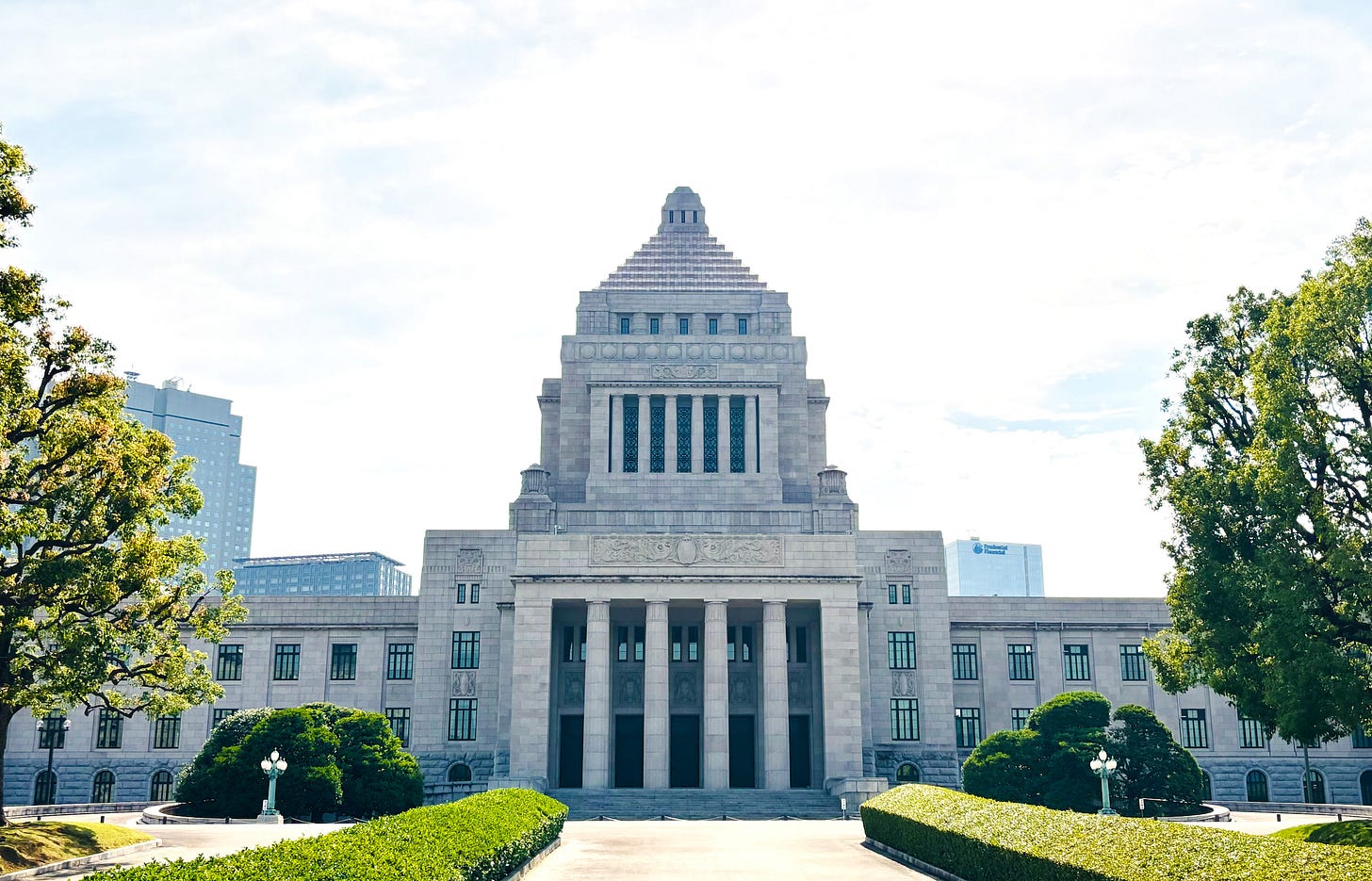
The stage of Japanese politics
First, a few basic points. The term "Nagatacho" is commonly used as a synonym for the stage of Japanese politics, and the National Diet Building is also located in Nagatacho. The National Diet Building, which is the country's highest decision-making body, is situated in Nagatacho, and adjacent to it are the Prime Minister's Office and the Diet Members' Office Building, which houses the offices of Diet members. There are no commercial facilities in this area, and there are not even any convenience stores. It is truly a town created for politics. While it may seem out of place in the context of Tokyo tourism, visiting Nagatacho offers a glimpse into a different aspect of Japan.
Two Options for Tours
There are two options for touring the National Diet Building: the House of Councillors and the House of Representatives. Both chambers offer tours in Japanese on weekdays, but tours in English are only available once on weekday afternoons at the House of Councillors. These tours are only open to individuals, with a maximum capacity of 30 people per tour, and reservations are required. On weekends, the House of Councillors is not open to the public, so only the House of Representatives is open, and tours are only available in Japanese. Hence, a guide who can interpret the text in English is necessary. Since this was a weekend tour, I visited the House of Representatives on Saturday afternoon.
House of Representatives Procedures
The closest station is Kokkai-gijidomae Station on the Marunouchi Line or Chiyoda Line. Take Exit 1 to the ground level, and you will reach the reception office in a few minutes. On weekends, viewing times are fixed, so just before the designated time, fill out the application form, line up, undergo a simple security check, and enter. I went at 2:00 p.m., and there were about 20 visitors. Except for English-speaking guides, staff do not speak English, so it is ideal to bring someone who can work as an interpreter. For first-time visitors, I recommend arriving 20 minutes before the calling time. The Diet pamphlet given at the entrance serves as your admission ticket, so be careful not to lose it until the tour is over.
Entering the Building
It is time to enter once security checks and group verification are complete. The entrance is at the rear of the National Diet Building, and you enter the courtyard while looking at the three diet member's halls on your left. Parliament members entered by horse-drawn carriage at the time of construction, so the entrance arch was designed to be high. In addition, the parliament buildings and the National Diet Building are connected by an underground passage, so you can go back and forth without getting wet in the rain. There is an urban legend that a subterranean passage also connects the Prime Minister's Official Residence and the National Diet Building, but this is incorrect; they are not connected underground.

Main Assembly Hall
I finally entered the building from the courtyard, which has a pond filled with colorful carp. Built by government officials nearly 90 years ago, this building has undergone numerous renovations and still retains its atmosphere. With its high ceilings and marble walls, you can feel the weight of time throughout your entire body.
This tour’s route is different from the usual route taken by members of parliament, so it is limited to the main assembly hall and central hall. While this means you cannot explore every corner of the building, the tour efficiently covers the main areas in just one hour.
You will notice a bronze-colored vent in the pond's center when visiting the courtyard. The vent was used to bring in outside air and ventilate the interior during construction when air conditioning did not exist.

The tour takes you up to the upper floor by elevator, where you can view the House of Representatives plenary session hall from the public gallery. The main seats in the plenary session hall have signs in Japanese and English explaining their functions.
From the center of the gallery is an "Imperial Throne" seat in the middle, higher than the others. This is where the Emperor sits during the opening ceremony. Below that is the Speaker's seat, and to the left, closest to the Speaker's seat, is the seat of the Prime Minister.
It is customary for lawmakers to sit in order of the number of seats they hold, starting from the left side of the chairperson's seat. Specifically, the Liberal Democratic Party, the largest party, sits on the left side, followed by the Constitutional Democratic Party of Japan, which occupies the front section from the chairperson's seat. In addition, each lawmaker's seat is equipped with a black rectangular pillar inscribed with their name, and it is customary to erect this nameplate when participating in the plenary session.
The front row of the gallery is for the press. It overlooks the main assembly hall.
The stairs to the public gallery of the main chamber are very steep, so please be careful when walking.
Central Area
The National Diet Building is symmetrical when viewed from the front. The interior of the prominent 65-meter-high central tower is decorated with various ingenious designs and ornaments. This area is the highlight of the tour.
Descending the stairs from the main assembly hall and entering the central tower area, you will find the "Imperial Resting Place," where His Majesty the Emperor meets with the Speakers and Vice-Speakers of both houses. This area is located at the top of the main entrance. Direct access to the central entrance is not permitted, but the entrance can be seen from a distance.
Another tour highlight is visitors moving to a terrace overlooking the large hall directly below the central tower.
While most of the materials used in the National Diet Building are said to be domestically produced, a few items are foreign-made. These include British-made stained glass in the ceiling of the main assembly hall and American-made door knobs and mailboxes. At the time, it wasn't easy to procure stained glass domestically, so Japanese artisans reportedly traveled to the United Kingdom to inspect the quality of the glass.
The stone used in the National Diet Building weighs approximately 28,000 tons, of which about 2,800 tons is marble used for interior decoration. Over 30 types of marble were collected from across the country. The National Diet Building, constructed with the nation's pride and the pinnacle of Japanese architectural technology, cost 25.7 million yen. When compared to the starting salary of a senior civil servant, it amounts to 2,667 times that amount, which would be approximately 69 billion yen today. However, comparing it to modern standards may not be meaningful. Therefore, we consider it impossible to construct the same building today, making it an extremely valuable architectural structure. Among these, the columns and walls are made of extremely rare coral limestone from Okinawa, and upon closer inspection, you can find numerous fossils.
Looking from the terrace into the hall, three statues of figures, such as Ito Hirobumi and Taisuke Itagaki, contributed to establishing parliamentary politics. Still, there is only a base for one additional statue without the bronze figure. There are various theories about why there is only a base for one additional statue. One theory suggests it symbolizes the unfinished nature of politics, while another posits that they couldn't select the fourth figure, leaving the pedestal empty.
Front of the building
・Once you have finished viewing the central tower, the tour is almost over. Exit from the side of the central entrance and go to the front of the National Diet Building. You can see the front entrance's carport is on the second floor. The carport is very high. You can take a photo of the imposing central tower.
• After this, the tour proceeds through the area featuring "prefectural trees" donated from all prefectures across Japan, moving toward the main entrance, where the guided tour concludes. Here, you can photograph the entire front facade of the National Diet Building. The tour ends as soon as you finish taking photographs, and you will leave the property. The tour lasts approximately one hour, making it highly efficient.
• On the way back, you can either walk toward the Sakurada Gate area and head toward the Imperial Palace or the National Diet Building subway station and take the subway to your next destination.
Notes
There are minor differences in visiting hours between the House of Representatives and the House of Councillors.
English tours are only available at the House of Representatives on weekdays afternoon for up to 30 people by reservation. Reservations will be accepted starting 60 days before the event, so I strongly recommend applying early to secure a spot.
Weekend tours: The House of Councillors does not offer tours on weekends. However, the House of Representatives provides three tours in the morning and three in the afternoon in Japanese, so you need a guide to make it more comprehensive.
Visiting hours:
House of Councillors: Weekdays from 9:00 a.m. every hour on the hour, with the last one at 4:00 p.m.
House of Representatives: On weekdays, every 30 minutes from 8:30 a.m. (except 12:30 p.m.) until 4:00 p.m.
Duration: Approximately 1 hour.
Finally
If you are interested in architecture, including Japanese politics, and are available on weekday afternoons, apply for an English-guided House of Representatives tour. Since there are only 150 spots available each week, it is essential to decide on your schedule early and apply as soon as possible. This preparation will allow you to see another side of Japan's modernization. You can arrange an English guide if you can’t join the English tour due to scheduling conflicts. If you contact me in advance, I will gladly assist you.
Starting from the National Diet Building, you can visit many attractions within a 10-minute subway ride, such as the Imperial Palace and Ginza, which may be worth visiting during your trip.






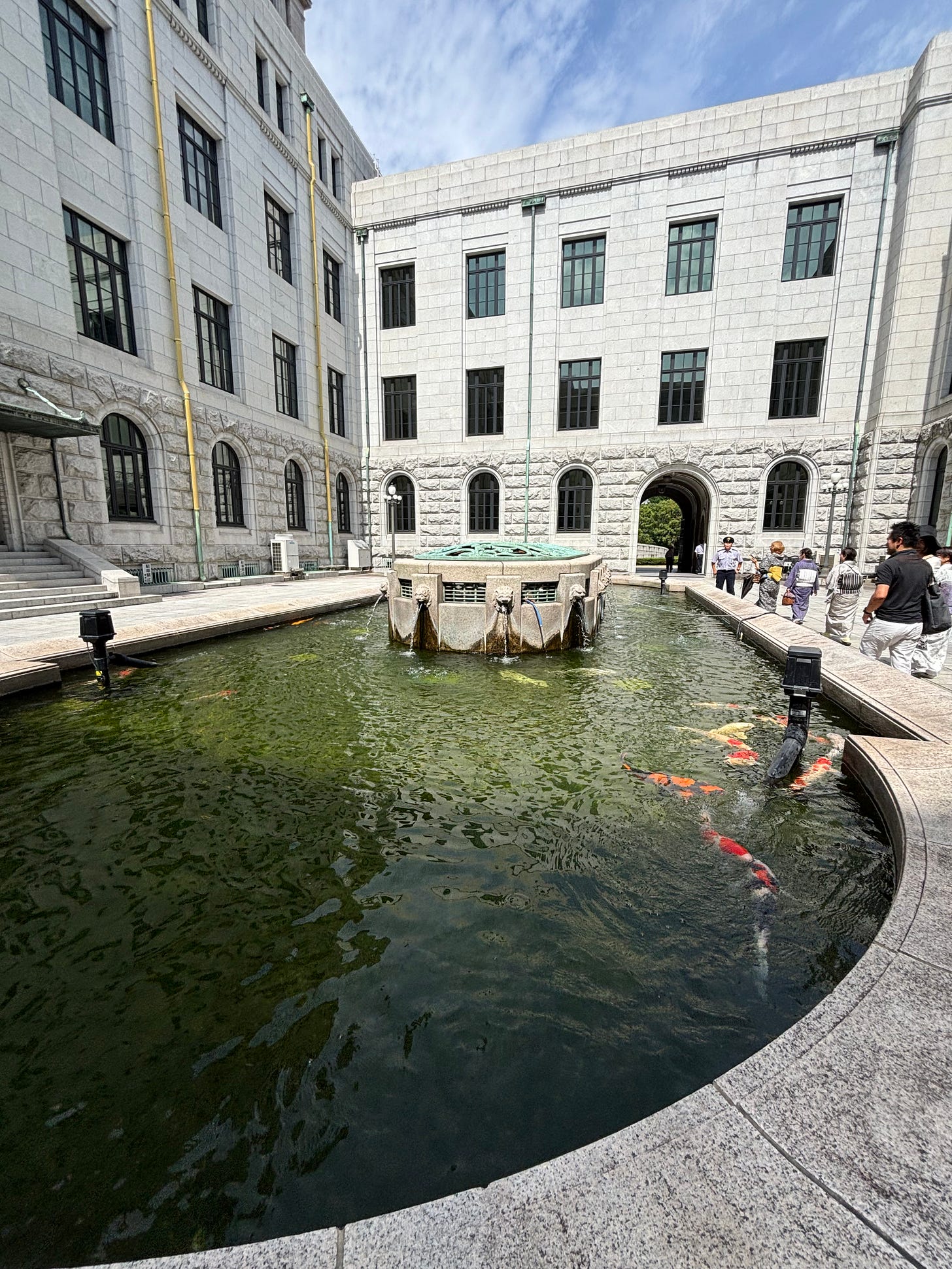
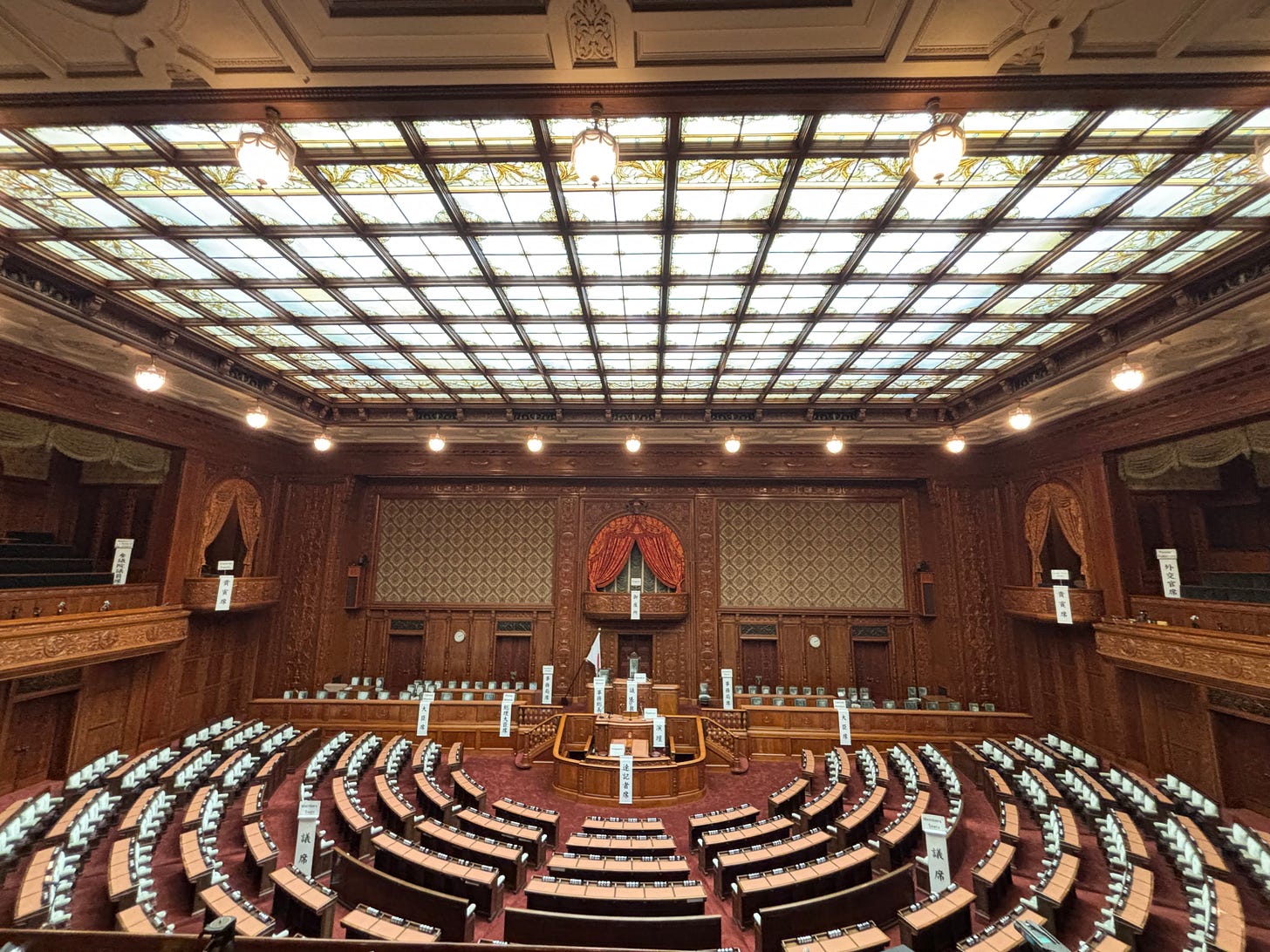

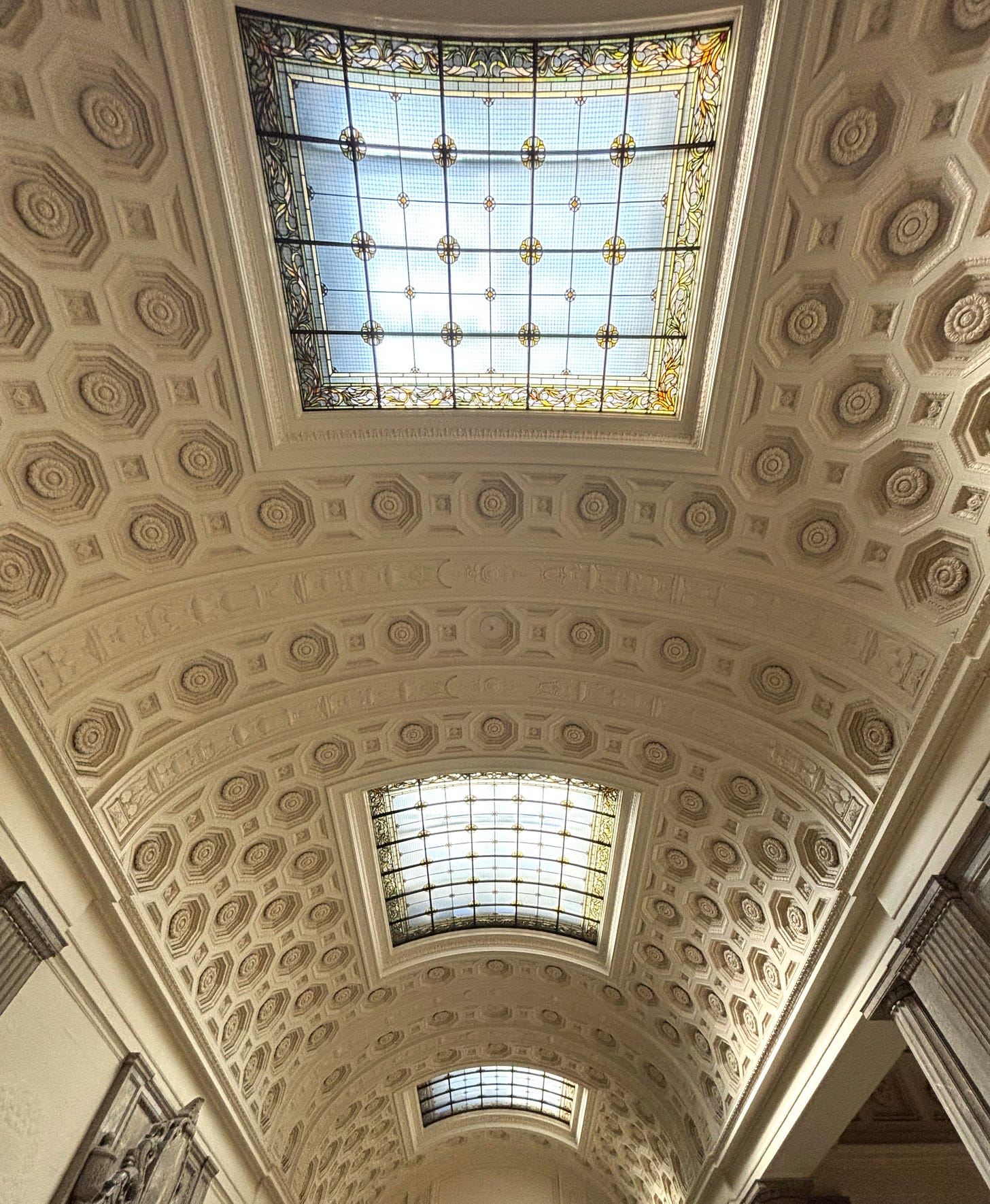

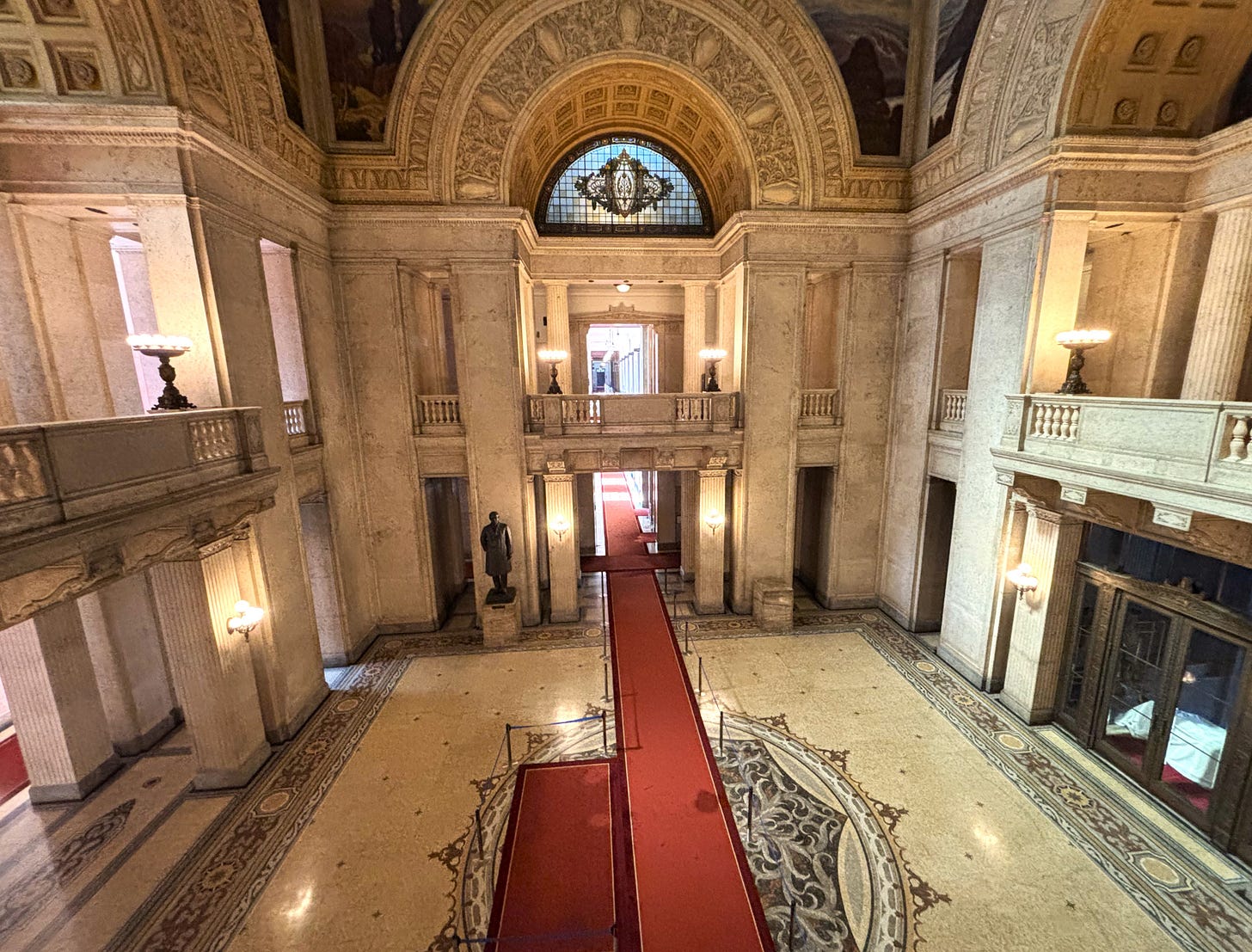


Not a site I would have thought to include in a visit, thanks for the information!